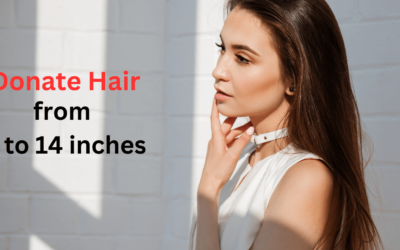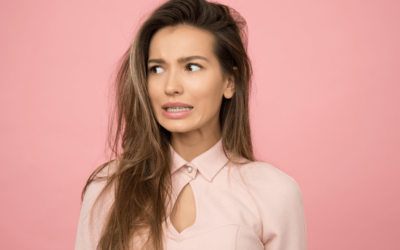Taking care of your hair involves more than just styling and treatments—it starts with understanding the basics, such as how often you should wash your hair.
While there’s no one-size-fits-all answer to this question, finding the right balance between cleanliness and maintaining the hair’s natural oils is crucial.
In this comprehensive guide, we’ll explore various factors that influence the frequency of hair washing and provide tips on establishing a personalized hair cleansing routine.
Understanding Your Hair Type
The frequency of hair washing depends on your hair type. Oily hair may require more frequent washing to manage excess sebum production, while dry hair benefits from a less frequent washing schedule to retain natural oils.
Determining your hair type and understanding its unique characteristics will help you establish the ideal washing routine.
Scalp Health and Hygiene
A healthy scalp is the foundation of healthy hair. Regular cleansing removes dirt, product buildup, and excess sebum, promoting a clean and balanced scalp environment.
We’ll discuss the importance of scalp health, common scalp conditions, and how proper hair washing contributes to maintaining optimal scalp hygiene.
Impact of External Factors
External factors, such as pollution and sweat, can affect the cleanliness and freshness of your hair. If you live in a highly polluted area or engage in activities that make you sweat profusely, you may need to adjust your hair-washing frequency accordingly.
We’ll explore how external factors influence the need for more frequent hair washing and provide tips for maintaining hair hygiene in challenging environments.
Over-washing and Under-washing
Both over-washing and under-washing can have negative effects on your hair and scalp. Over-washing strips the hair of its natural oils, leading to dryness, frizz, and potential breakage.
On the other hand, under-washing can result in a buildup of dirt, oils, and styling products, causing scalp irritation and dull-looking hair.
We’ll delve into the consequences of over-washing and under-washing, helping you find the delicate balance between the two.
Signs Your Hair Needs Washing
Your hair provides various signals indicating when it’s time for a wash. Greasy hair, an itchy scalp, a bad odor, and changes in hair texture are some of the signs that your hair needs cleansing.
We’ll discuss these signs in detail, helping you recognize when it’s necessary to wash your hair and maintain its freshness.
Factors to Consider for Different Hair Routines
Different lifestyles and hair routines require tailored hair washing schedules. For instance, individuals who engage in regular workouts may need to wash their hair more frequently to remove sweat.
Similarly, individuals who use heavy styling products or undergo hair treatments may need to adjust their washing routine to maintain hair health.
We’ll provide guidance on adapting your hair washing frequency based on your specific lifestyle and hair care practices.
Dry Shampoo as an Alternative
Dry shampoo can be a helpful solution for refreshing your hair between washes, especially for those with oily hair. We’ll explain what dry shampoo is, how it works, and its pros and cons.
Additionally, we’ll provide tips on using dry shampoo effectively to extend the time between hair washes while keeping your hair looking and feeling clean.
Establishing Your Personal Hair Washing Routine
Creating a personalized hair washing routine involves experimentation and observation.
We’ll guide you through the process of establishing your ideal hair washing frequency, including keeping a hair diary, tracking your hair’s response to different routines, and making adjustments as necessary.
By understanding your hair’s unique needs, you can achieve a balanced routine that keeps your hair clean and healthy.
Hygiene Tips for Hair Washing
Proper hygiene practices during hair washing contribute to effective cleansing and scalp stimulation.
We’ll provide step-by-step instructions for shampooing techniques, scalp massage for improved blood circulation, thorough rinsing, and gentle towel drying.
Following these tips will enhance the cleansing process and leave your hair feeling refreshed.
Expert Insights and Recommendations
While this blog post offers guidance on hair washing frequency, consulting with a professional, such as a hairstylist or trichologist, can provide valuable insights tailored to your specific hair and scalp needs.
We’ll emphasize the importance of seeking expert advice and how a professional can assess your hair condition, provide personalized recommendations, and address any concerns you may have.
Maintaining clean and healthy hair is a balancing act that depends on several factors.
By considering your hair type, scalp health, lifestyle, and the signals your hair sends, you can establish a customized hair washing routine that keeps your locks fresh, vibrant, and full of life.
The Role of Water Temperature
The temperature of the water you use during hair washing can impact the health and appearance of your hair.
Hot water can strip the hair of natural oils and cause dryness, while cold water can help seal the hair cuticles and add shine.
We’ll discuss the effects of different water temperatures and provide recommendations on finding the right balance for your hair.
The Importance of Proper Conditioning
Conditioning plays a vital role in hair care, providing moisture, detangling, and overall hair softness. We’ll explain the benefits of using a suitable hair conditioner and how it complements the hair-washing process.
Additionally, we’ll offer tips on choosing the right conditioner for your hair type and incorporating it into your hair care routine.
Effects of Hair Length and Texture
Hair length and texture can influence the frequency of hair washing. For example, individuals with longer hair may find it more challenging to maintain cleanliness due to the length and potential for tangling.
Similarly, those with curly or textured hair may prefer to wash less frequently to preserve natural oils and prevent dryness. We’ll delve into the effects of hair length and texture on washing frequency and provide tips for different hair types.
Adjusting Hair Washing Frequency with Seasons
Seasonal changes can affect your scalp’s oil production and hair’s moisture levels.
For instance, during colder months, the scalp may become drier, while hot and humid weather can lead to increased oiliness.
We’ll discuss how adjusting your hair washing routine according to seasonal changes can help maintain a healthy scalp and manageable hair.
Using Natural Remedies for Hair Cleansing
Some individuals prefer to minimize the use of commercial hair products and opt for natural remedies for hair cleansing. We’ll explore different natural methods such as vinegar rinses, baking soda treatments, and herbal infusions.
These alternatives can provide gentle cleansing and nourishment for your hair while reducing reliance on conventional shampooing.
Hair Washing Myths Debunked
There are several misconceptions surrounding hair washing, including the belief that daily washing leads to hair loss or that infrequent washing promotes hair growth.
We’ll debunk these myths and provide evidence-based information to help you make informed decisions about your hair-washing routine.
Considering Personal Preferences and Lifestyle
Apart from hair type and scalp health, personal preferences and lifestyle factors should also be taken into account when determining hair washing frequency.
Some individuals may simply prefer the feeling of freshly washed hair, while others may have specific styling needs or work environments that require frequent washing.
We’ll emphasize the importance of considering your personal preferences and lifestyle when establishing your hair care routine.
Adjusting Hair Washing Frequency Over Time
It’s essential to recognize that your hair’s needs may change over time. Factors such as hormonal changes, aging, pregnancy, and postpartum can influence scalp health and hair texture.
We’ll discuss how to adapt your hair-washing frequency to accommodate these changes and ensure your hair remains healthy and manageable.
The Role of Hair Styling Products
The regular use of hair styling products can lead to product buildup on the hair and scalp, affecting its overall cleanliness.
We’ll provide tips on incorporating clarifying shampoos or hair treatments into your routine to remove residue and restore the hair’s natural balance.
Experimenting with Co-Washing
Co-washing, also known as conditioner washing, is a technique popular among individuals with curly or textured hair.
It involves using a cleansing conditioner instead of traditional shampoo to gently cleanse the hair while retaining moisture.
We’ll explore the benefits of co-washing, recommend suitable products, and explain how to incorporate this method into your hair care routine.
Remember, finding the right hair washing frequency is a personal journey. By considering these factors, experimenting, and listening to your hair’s needs, you can develop a customized routine that promotes a healthy scalp and beautiful, manageable hair.
















